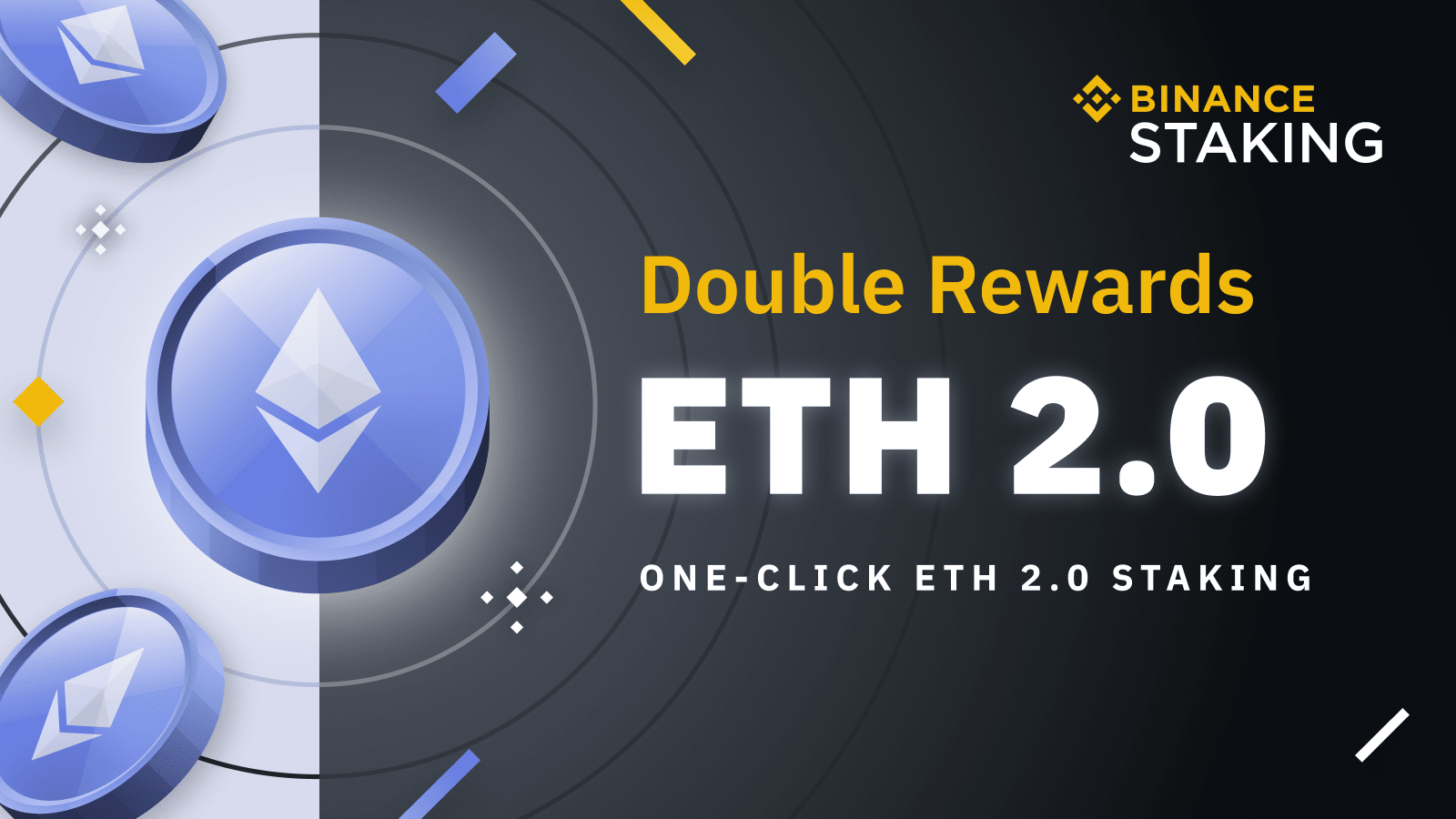Binance Staking has launched support for ETH 2.0, allowing users to gain staking benefits from the ETH 2.0 upgrade coming on December 1, starting with the Beacon Chain launch. We offer all our users an attractive introductory APY of up to 20%, which starts high and decreases with staked ETH.
Additionally, to lower the threshold for users, Binance Staking pays for users to build validators, bear the risk of on-chain penalty and forfeiture, and we will redistribute on-chain profits to users. With the many advantages and benefits, Binance Staking aims to become an ideal platform for ETH 2.0 staking.
Binance will also issue BETH, a new wrapped token (BToken) that is 1:1 pegged to ETH on the Ethereum blockchain. With BETH’s launch, we aim to support users who trade or hold ETH on Binance during the 18-24 months needed to lock in ETH on-chain. You can use BETH to redeem ETH after the formal launch of ETH 2.0, and Binance Staking helps keep your tokens safe no matter what happens during the ETH 2.0 rollout.
We’re launching the "Participate in ETH2.0 Staking and Win Double Rewards" campaign.
During the activity, all users with completed KYC verification will receive an additional BNB reward equivalent to BETH while also earning the staking rewards. The users' rewards during the activity = the BETH rewards obtained by staking ETH + equivalent BNB to BETH income.
This activity will be running from December 2, 0:00 am to December 16, 0:00 am (UTC).
Please see the latest announcement to learn more.
Why Stake ETH on Binance Staking?
Binance Staking offers many advantages, including up to 20% APY that we mentioned above. Here are some of these perks:
Low entry requirements - The minimum stake required to participate in ETH 2.0 on your own is 32 ETH. As of November 26, that translates to $16,000. Not everyone has $16,000 worth of ETH to stake. Thankfully, with Binance Staking, you can reap the benefits of ETH 2.0 staking with just a small fraction of that amount. With Binance, you can start with only 0.0001 ETH.
Funds are SAFU - Our highest security standards and dedicated security teams will ensure that all your funds remain sound and safe during the ETH 2.0 upgrade. This is especially important because it may take up to 18 months to reach Phase 1 of ETH 2.0. Binance makes it convenient for ETH holders to stake without worrying about the process’s complications and risks.
Lower tech barrier - On behalf of our users, we will take care of all responsibilities required to participate in ETH 2.0, including testing, validator maintenance, and more. Being involved in these steps can require significant technical support and knowledge. With Binance Staking, this will be a hassle-free experience.
Easy liquidity - Before Phase 1 of ETH2.0 starts, all ETH should be locked in. This translates to little flexibility when it comes to using your ETH funds. But with our BETH launch, users can turn these locked funds into tradable assets while waiting for the lock-in period to expire. Once the funds are unlocked, you can quickly redeem ETH by swapping out your BETH holdings.


Comments
Post a Comment